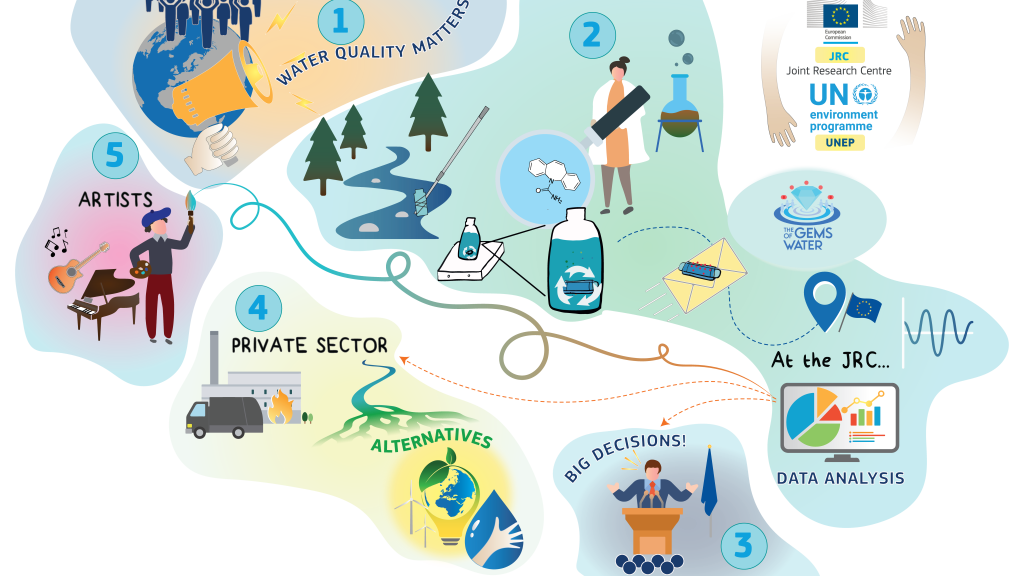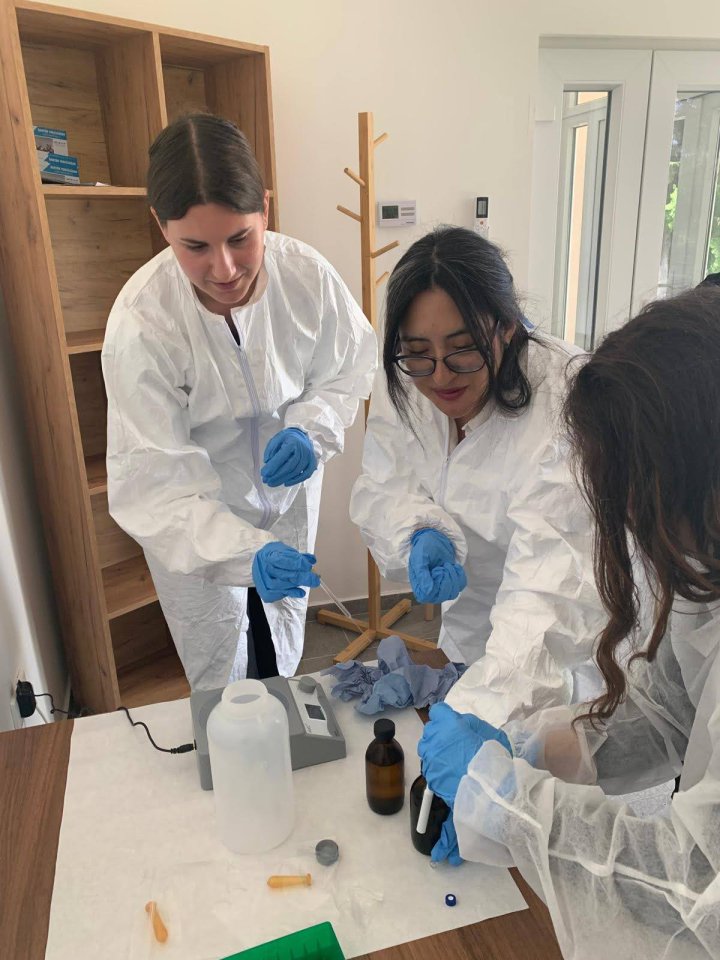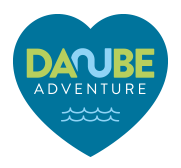Citizen Science - Let's Go Sampling Together!

We are thrilled to announce the resounding success of the 5th Joint Danube Survey (JDS5) Citizen Science Program, a pioneering initiative designed and coordinated by the Joint Research Centre (JRC) of the European Commission and supported by the International Commission for the Protection of the Danube River (ICPDR).
This hands-on initiative coordinated by the JRC and supported by the ICPDR gave students the opportunity to actively participate in the world’s largest surface water monitoring survey, as ‘citizen scientists’ engaging in real-world environmental research to protect the Danube River.
This initiative has empowered students to become active participants in real-world environmental monitoring, demonstrating how collective action can make a significant difference in the health of our waterways.
A Journey of Discovery and Impact
The JDS5 Citizen Science Program has successfully engaged 10 schools from across the Danube Basin, providing students with a unique opportunity to participate in the world’s largest surface water monitoring survey. As citizen scientists, these young researchers have contributed to vital environmental research aimed at protecting the Danube River.
Why Participate?
By joining this citizen science initiative, students have had the chance to:
✅ Engage in real-world scientific research on water quality and pollution.
✅ Receive an official certificate recognizing their participation in JDS5.
✅ Go to the ICPDR Secretariat at the Vienna International Centre for a study visit.
✅ Work alongside experts and experience environmental monitoring first-hand.
How It Worked:
The program unfolded in a series of well-coordinated steps:
- Step 1 - Sampling Kits: Each participating school received a fully funded sampling kit provided by the JRC. These kits included sampling bottles, stir bars, and magnetic stirrers for six samples.
- Step 2 - Sample Collection: Students collected water samples from local Danube sites or tributaries using special stir bars that absorb contaminants.
- Step 3 - Sample Preparation: The stir bars will be placed on a magnetic stirrer, which uses kinetic energy to rotate and prepare the sample.
- Step 4 - Shipping Samples: Schools shipped the samples back to JRC using pre-paid postage, ensuring no costs were incurred.
- Step 5 - Sharing Experiences: Students documented their experiences through photos and videos, some of which were featured on official platforms.
Important Details:
- Participants: Students aged 16 and above.
- Timing: The sampling ideally took place between May and June 2025, allowing ample time to analyze and showcase the results.
- Locations: Schools selected sampling sites along the Danube with transportation arranged by the schools when needed.
- Special Support: Representatives from the Danube for All project assisted some of the schools in Austria, Germany, Hungary, and Romania.
We encourage teachers and students to document their experience with photos and videos! Schools that tag us on social media will have a chance to be featured on our official pages.
A Celebration of Success
We are incredibly proud of the enthusiasm and dedication shown by the participating schools. Their contributions will not only advance our understanding of the Danube’s ecological status but also inspire a new generation of environmental stewards. We encourage teachers and students to continue documenting their experiences with photos and videos. Schools that tag us on social media will have the chance to be featured on our official pages.
Looking Ahead
The success of the JDS5 Citizen Science Program underscores the importance of engaging young minds in environmental conservation. By fostering a sense of responsibility and curiosity, we are paving the way for a cleaner, healthier Danube for future generations.
Thank you to all the schools, teachers, and students who made this initiative a success. Your efforts are a testament to the power of citizen science and the impact of collective action.

If you are interested in finding out more about this activity, please contact us directly at jds5@icpdr.org for more information.
Alongside many international partners, the ICPDR contributed to the final video premiered at the World Water Congress 2025, featuring an inspiring collection of voices sharing what we would thank water for. The video was produced by Gems of Water, our citizen science partner for JDS5.



